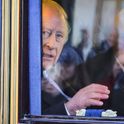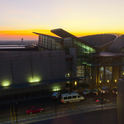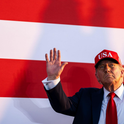The Kremlin’s plan was to defeat Ukraine in a few days before the end of February. Instead, Putin is facing the Victory Day holiday on 9th May with no victory.
Although the Kremlin is claiming that the “special military operation” is on track, both the initial plan to seize control of the whole country and the reduced plan to capture the south and east have so far failed. While “phase two” of the war has seen limited gains for Russia in some areas, its army has been pushed back elsewhere. A long-term war of attrition—involving further large-scale losses of men and equipment—seems likely, with little or no prospect of Russia achieving its main objectives in Ukraine and beyond.
Not surprisingly, Putin now appears anxious to produce some kind of result that he can present as a clear success in Ukraine. Speculation that this will focus on Mariupol, destroyed by the Russian invasion, has been fuelled by reports that the rubble is being cleared to allow a victory parade. The determination to finally capture the Azovstal complex—despite claims last month that Putin had ordered the attack to be abandoned and even though the troops bogged down in fighting there are urgently needed for Russia’s attack on eastern Ukraine—suggests that the total defeat of Ukraine there is a political priority.
But a triumphal parade through the Mariupol wasteland looks like a poor return on 10 weeks of fighting, the deaths of perhaps more than 20,000 troops and the greatest damage to the Russian economy since the nightmare of the 1990s.
One option is for Putin to simply declare “mission accomplished” in Ukraine, irrespective of his war aims and the real situation on the ground. The Kremlin has tightened its stranglehold on the media and people speaking accurately about the war now face up to 15 years in prison. This means that government propaganda is now the only version of war news available to many Russians. If Putin declares that Luhansk and Donetsk regions have been “liberated” or that the south of Ukraine has been “denazified,” the mainstream Russian media would not challenge the claims if fighting continues. Even if there is no wider declaration of victory, the Kremlin is likely to present its catastrophic failure in Ukraine as a success recalling the noble sacrifice and triumph of the Great Patriotic War.
In the longer term, however, this approach will be unstainable as propaganda runs up against reality. Whatever the Kremlin and the pliant media claim about the conduct of the war, and whatever claims Putin makes about victory, the staggering Russian casualty rate will tell another story. Just as in the Soviet war in Afghanistan, the widening gap between what Russians are being told and what they know from their own families and communities about the dead and wounded is likely to erode the credibility of the government’s claims. That could precipitate a shift away from public support for the war, and for Putin himself.
Other areas of discontent are becoming visible as the war drags on with no prospect of a successful end. Unhappiness among the rich and powerful in Russia has been muted so far, but the erosion of their wealth and the disappearance of key elements of their lifestyle that originally bought their consent for Putin’s authoritarian rule creates risks for him.
In the context of Russia’s ongoing failure to make significant gains in “phase two” of the invasion, two other states where Russia has significant influence, Moldova and Belarus, have become more prominent features of rumour and analysis.
A series of incidents in Moldova’s separatist region of Transnistria—host to a small Russian military presence since the collapse of the USSR—prompted some concerns that the Kremlin intended to use the area either to launch an invasion of Ukraine’s south west or to destabilise Moldova and signal its willingness to widen the war. Given the huge difficulties of attacking Ukraine from Transnistria, this may be disinformation, intended to persuade Ukraine to deploy troops in its border region rather than in the east (though an attempt to undermine the Moldovan government through non-military means is more likely).
The announcement by the Belarusian government of combat readiness drills have raised questions about whether it is finally being pushed into joining the war after previously refusing to get involved. A Belarusian invasion would restrict Ukraine’s ability to direct forces to the fight in the east, significantly benefitting Russia. But the move would be unpopular, and the Belursian president Alexander Lukashenko (dependent on Russian support since the stolen 2020 elections) is far from secure.
If Russia is indeed using the threat of military action from Transnistria and Belarus as a means of reducing the forces Ukraine can deploy to the fight in the east, this is a further sign that the Kremlin is pulling every lever in reach in an effort to improve its situation. Threats to target Nato arms shipments, threats of escalation in the Baltic if Finland and Sweden join Nato, and even suggestions by media figures of a nuclear strike against the UK have all failed to halt the flow of military aid to Ukraine and the prospect of Nato expansion. The refocusing of the war on the south and east has not brought victory closer. Whatever Putin announces on Victory Day, the ongoing military, diplomatic and economic disaster of the war will continue to push victory in Ukraine out of reach.












